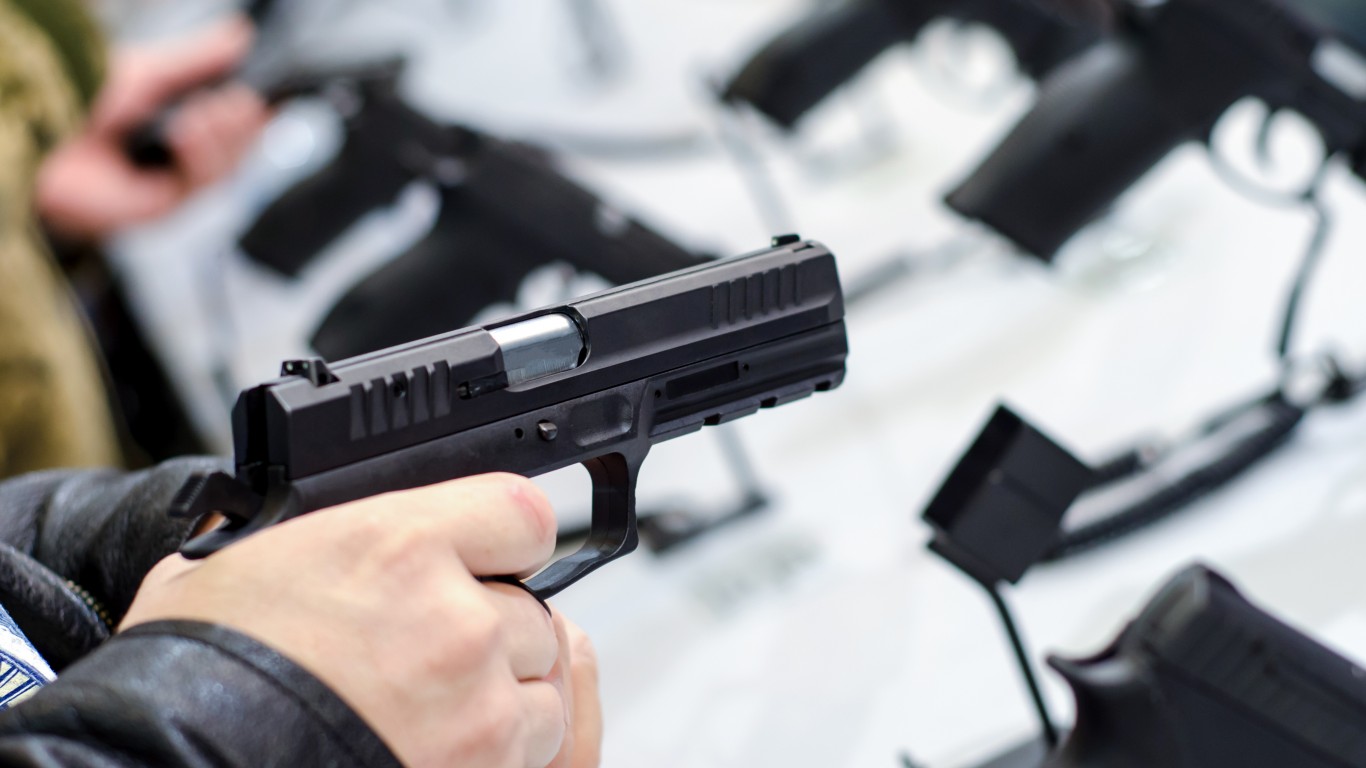Companies and Brands
How Criminals and Mass Killers Obtain Firearms

Published:
Last Updated:

The horrific recent mass killings in El Paso and Dayton have once again focused Americans’ attention on gun violence and what can be done to stop or at least curb it.
Do more and stricter state gun control laws reduce gun violence? How do guns get into people’s hands, whether they are good guys or bad guys?
A recent survey of available data from government and nongovernment agencies by livability research firm AreaVibes puts some numbers to the argument currently raging over how best to stop U.S. gun violence.
One of the most important data points in the survey is how criminals acquire guns. According to a 2016 survey of prison inmates, only one in 10 purchased in a retail store the firearm used in the crime for which they are jailed. Nearly 70% either acquired their firearm illegally in a street sale or received it from a family member or friend. None of these firearms is tracked or controlled by state or federal gun laws.
However, most mass killers get their weapons legally. According to Mother Jones magazine’s database of mass shootings, 81 weapons used in 114 mass shootings between 1982 and this year were purchased legally. The Dayton, Ohio, shooter, for example, purchased his assault-style weapon legally online, according to a report at USAToday.
The AreaVibes survey cites a U.S. Bureau of Alcohol, Tobacco, Firearms and Explosives (ATF) report that more than three-quarters of firearms used to commit crimes are handguns, either semi-automatic pistols or revolvers. Long guns (rifles and shotguns) are used in less than a quarter of all crimes.
Again, however, of 25 mass killings since 1982 that have claimed between nine and 58 lives, nearly half (11) of the killers used handguns (with large magazines) exclusively. The Las Vegas Strip massacre of 2017 left 58 people dead at the hands of a killer armed with 23 weapons, mostly rifles, of which two had been modified to fire on full automatic.
Just looking at the data on gun crime and mass shootings, two things become apparent. Here are a couple of facts: the death toll in seven mass shootings so far this year is 59, while the number of people who have died from U.S. gun violence so far this year is more 9,100, according to the Gun Violence Archive.
These numbers suggest that a single approach to ending gun violence in this country is unlikely to work. Criminals get their guns mostly through illegal means, while mass shooters mostly buy them legally. Stopping gun sales that are already illegal is hard, and tougher local and state laws are unlikely to make law enforcement either easier or more effective. Stopping legal sales to mass shooters may be manageable at all levels of government, including the federal government.
The AreaVibes study makes a second point: “The facts suggest that gun crime is not an issue that can be resolved at a local level. Rather, this may be a situation in which the nation must stand together and defend its people with the right laws (or lack thereof) to protect all [state] borders, or we will remain divided and weak in the battle against gun crime.”
A recent study by researchers at Boston University suggests three types of gun control laws that do reduce firearm deaths.
If you’re one of the over 4 Million Americans set to retire this year, you may want to pay attention.
Finding a financial advisor who puts your interest first can be the difference between a rich retirement and barely getting by, and today it’s easier than ever. SmartAsset’s free tool matches you with up to three fiduciary financial advisors that serve your area in minutes. Each advisor has been carefully vetted, and must act in your best interests. Start your search now.
Don’t waste another minute; get started right here and help your retirement dreams become a retirement reality.
Thank you for reading! Have some feedback for us?
Contact the 24/7 Wall St. editorial team.